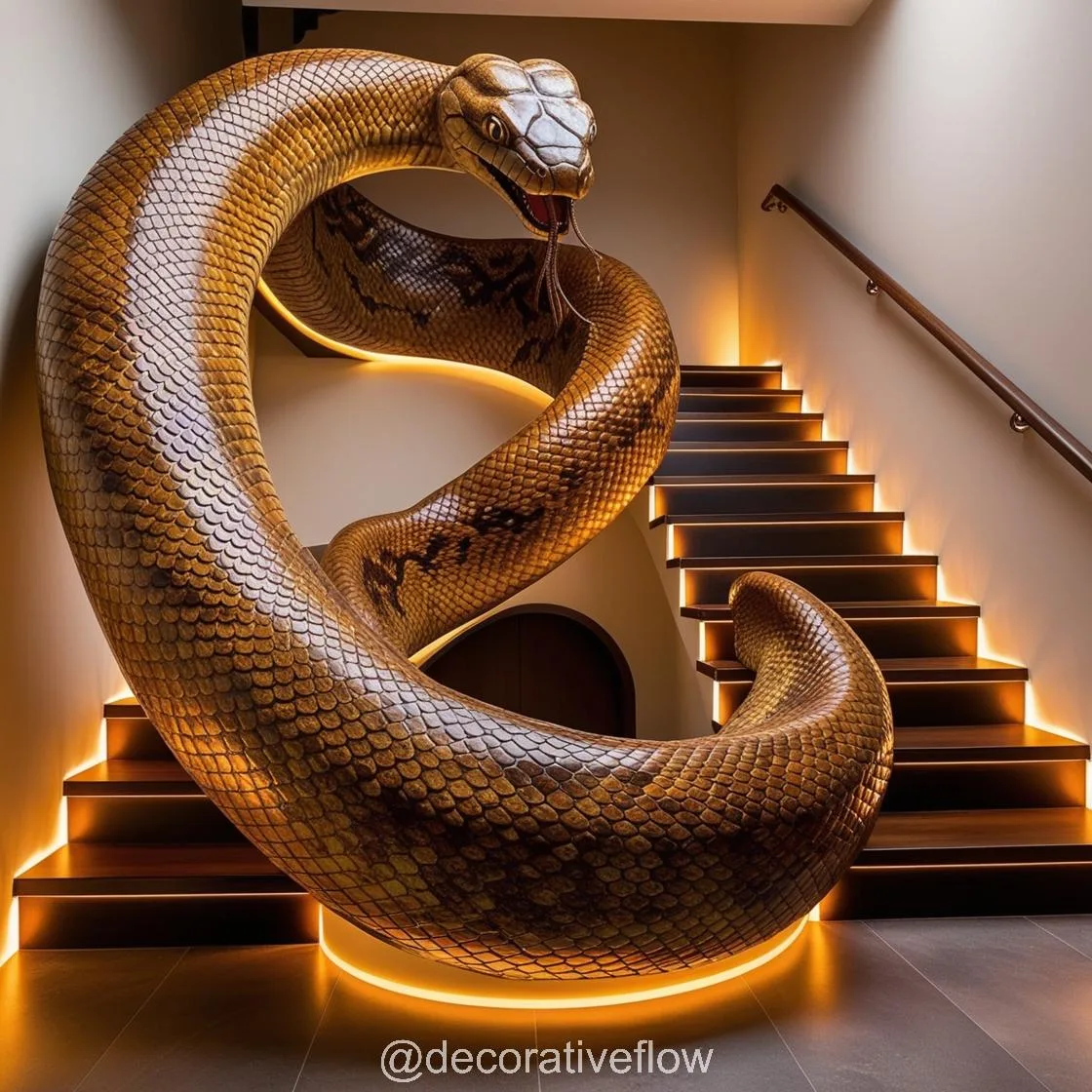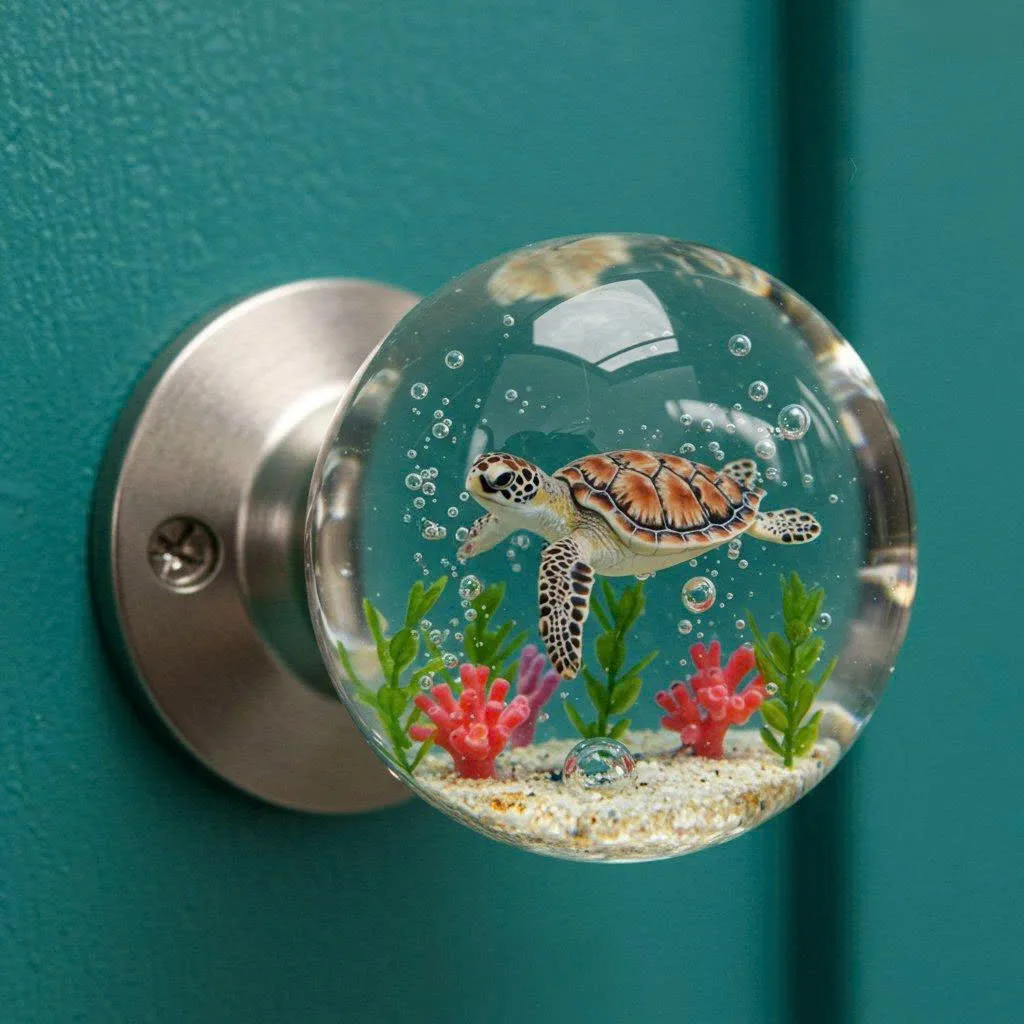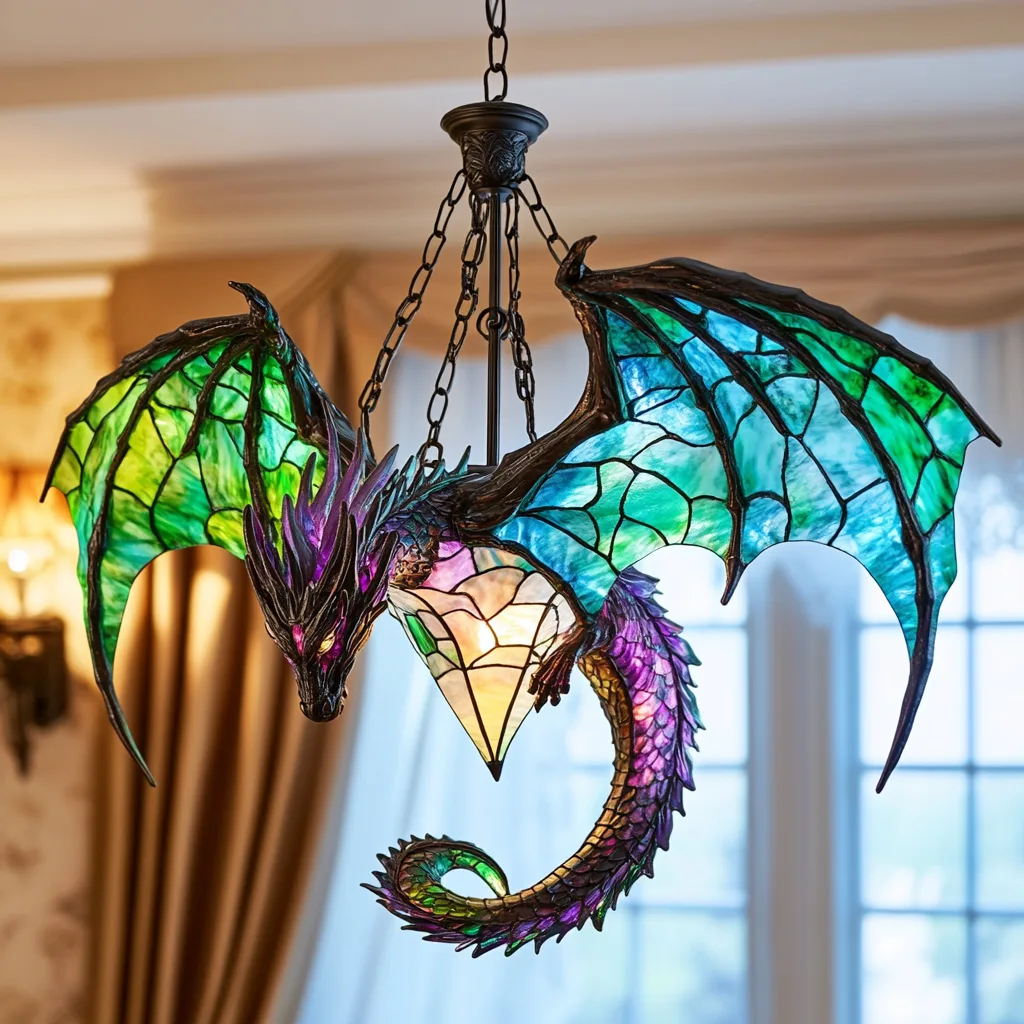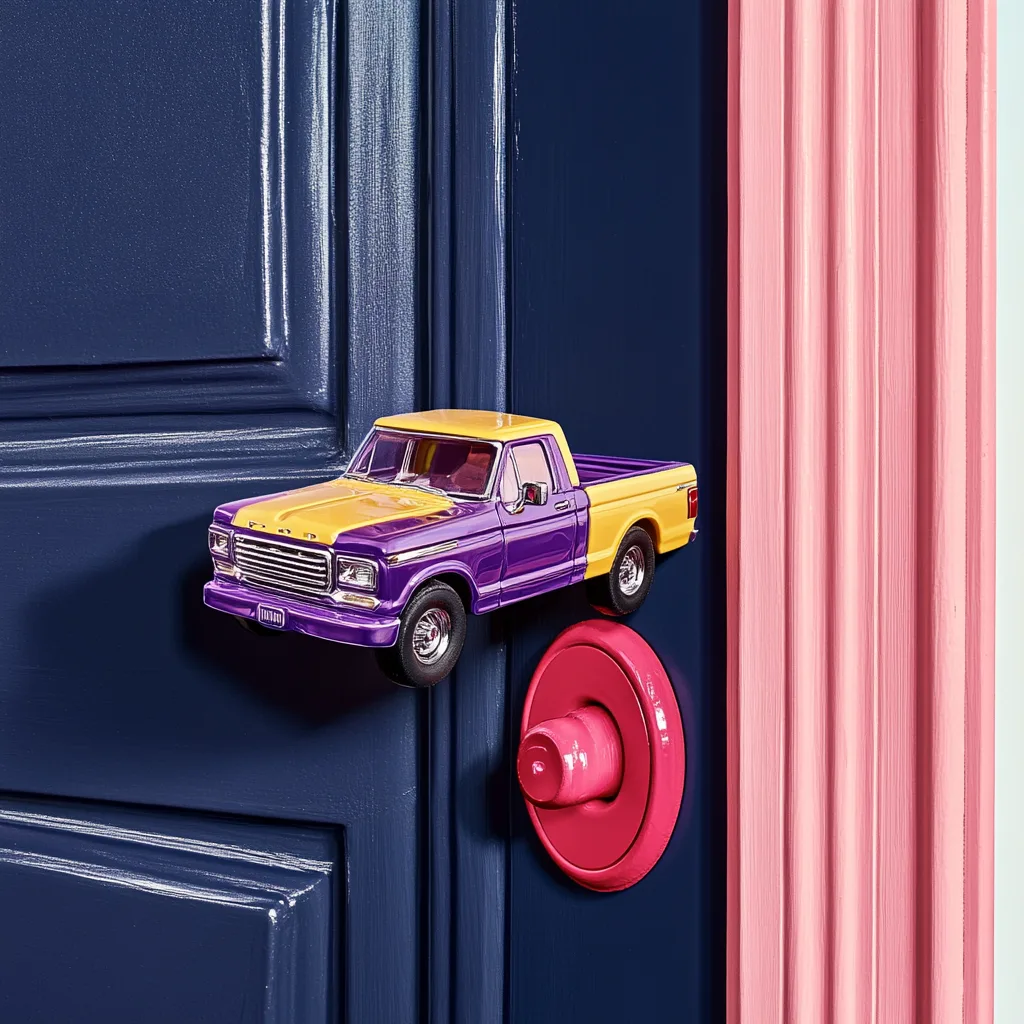Contents
Embracing the Fluid Elegance of Snake Shaped Staircases
Staircases are more than mere functional architectural elements—they are opportunities to create breathtaking designs that define and elevate spaces. Among the myriad of staircase styles, the snake shaped staircase emerges as a truly mesmerizing and avant-garde creation. Inspired by the sinuous movements and organic curves of a snake, this design embodies grace, flow, and artistic ingenuity. Its unique form captures attention, transforming staircases into sculptural masterpieces that seamlessly blend utility with aesthetics.
In this article, we explore the profound allure of snake shaped staircases, delving into their design philosophy, construction techniques, and the transformative impact they can have on interiors. By embracing the art of curves, architects and designers push the boundaries of conventional forms, offering homeowners and businesses a staircase that is not only functional but also an emblem of sophistication and creativity.
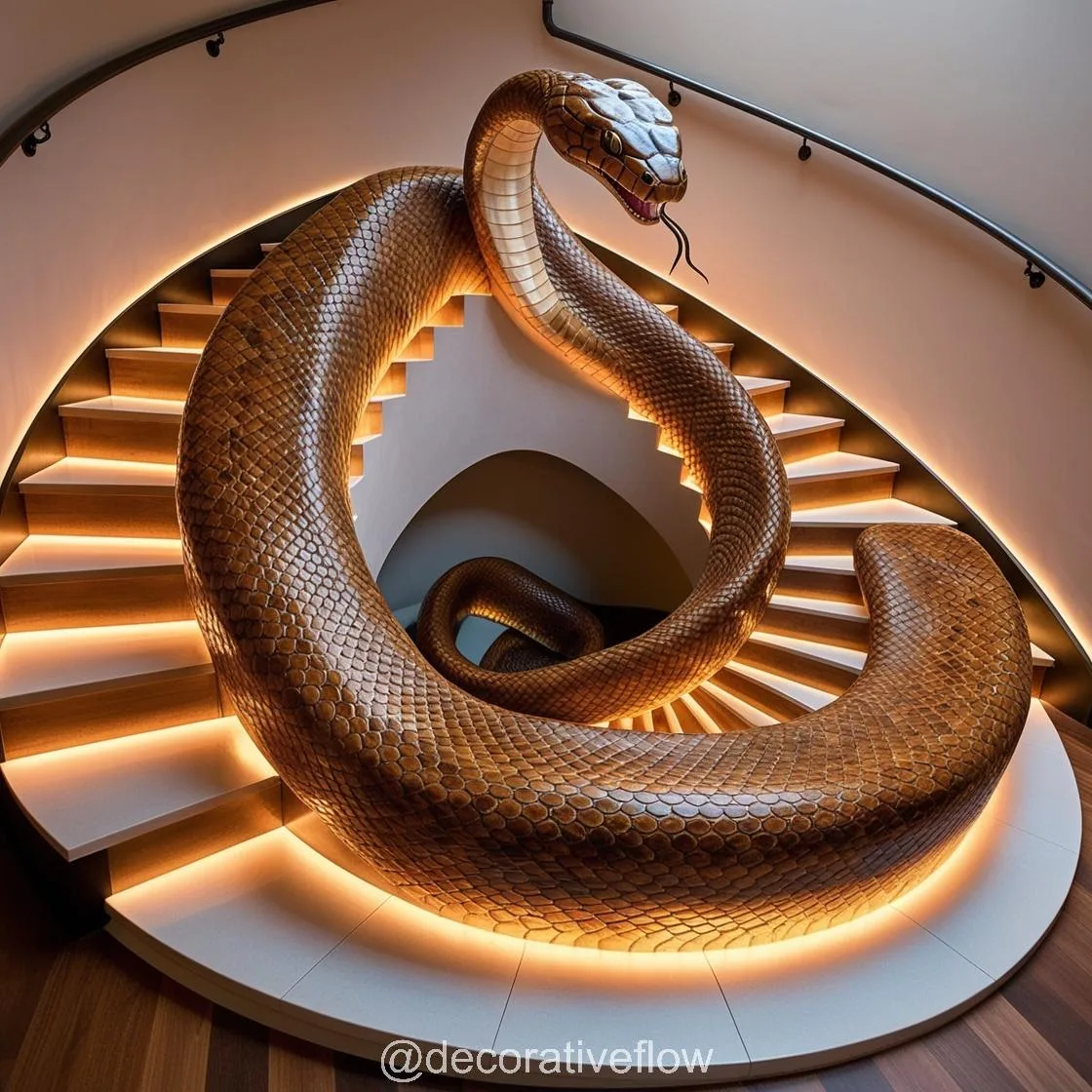
The Anatomy and Design of a Snake Shaped Staircase
1. What Defines a Snake Shaped Staircase?
A snake shaped staircase is characterized by its flowing, curvilinear form that mimics the natural movements of a snake. Unlike traditional straight or angular staircases, this design features smooth, undulating curves that create a sense of movement and dynamism. These staircases often employ a spiral, helical, or freeform layout, with sweeping arcs that exude a sense of fluidity.
Key features include:
- Organic curves: The primary hallmark of the snake shaped staircase is its continuous, graceful lines that appear almost alive.
- Structural ingenuity: The design often involves complex engineering to support its unconventional shape.
- Versatility: It can be adapted to various materials and styles, from minimalist and modern to ornate and classical.
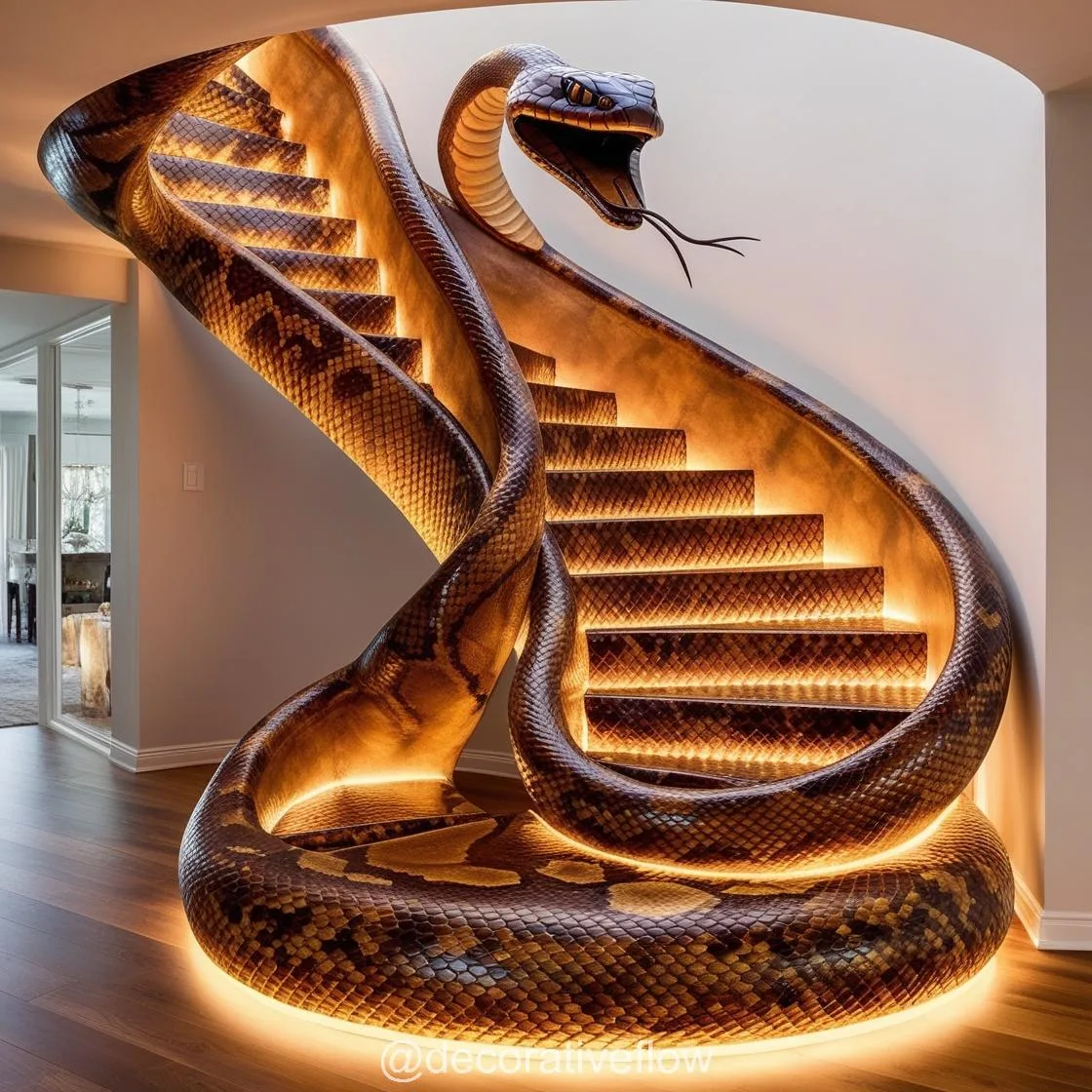
2. Design Philosophy: The Symbolism Behind the Snake
The snake is a powerful symbol in art and culture, representing transformation, renewal, and continuity. Incorporating this symbolism into architectural design, the snake shaped staircase evokes ideas of harmony, strength, and fluidity. This design embodies:
- Nature’s geometry: Inspired by the natural world, the staircase creates a seamless connection between organic forms and built environments.
- Movement and energy: Its curves suggest perpetual motion, energizing spaces with a dynamic aesthetic.
- Timeless elegance: The form transcends fleeting trends, offering a design that feels both contemporary and eternal.
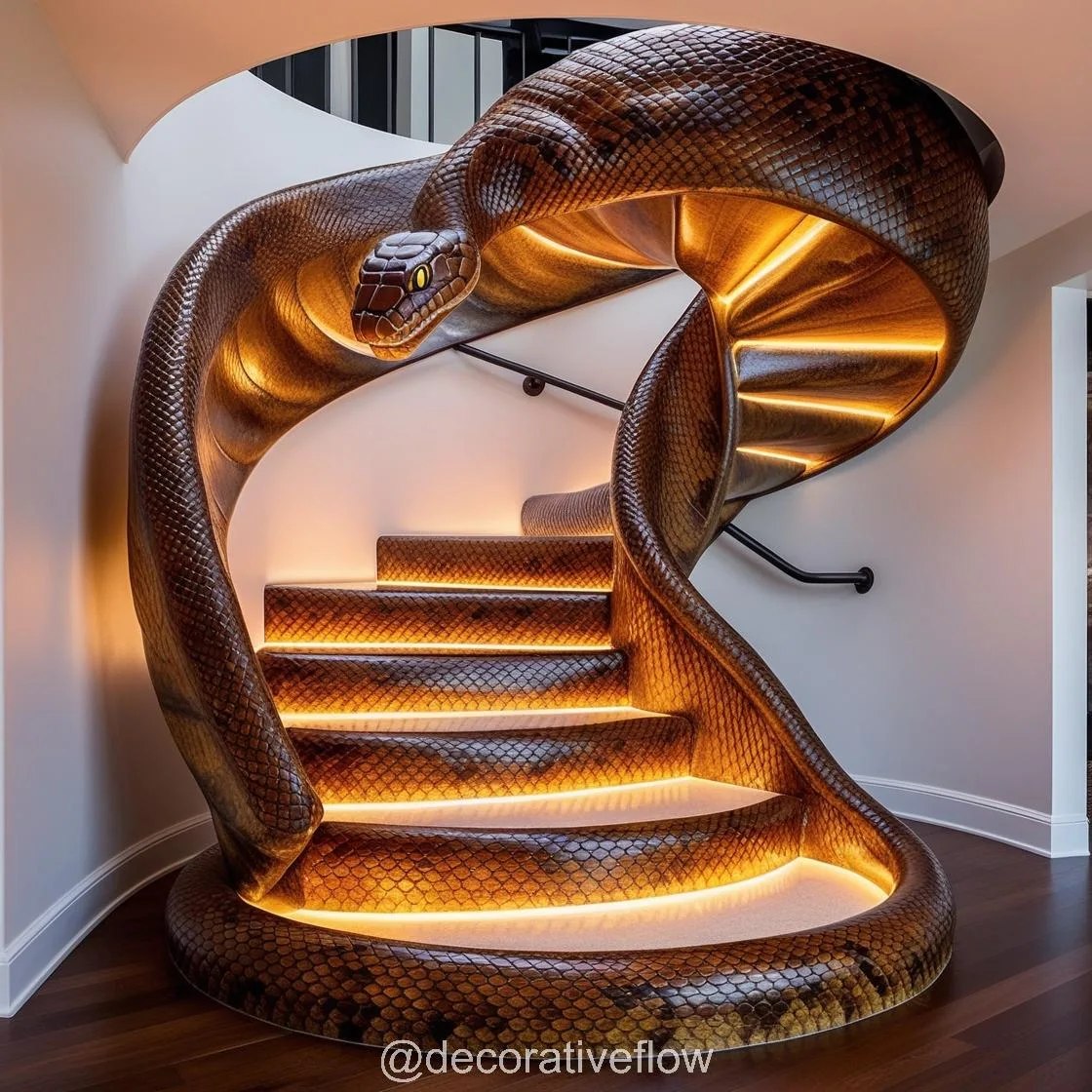
3. Materials and Construction Techniques
Designing and constructing a snake shaped staircase requires meticulous attention to detail and mastery of advanced techniques. The choice of materials and construction methods plays a pivotal role in bringing the design to life.
Materials:
- Wood: Warm and versatile, wood allows for intricate carving and natural beauty. Popular choices include oak, walnut, and teak.
- Metal: Steel and aluminum provide strength and flexibility, enabling sleek, modern designs.
- Glass: Used for treads or balustrades, glass enhances the sense of lightness and transparency, amplifying the visual impact.
- Concrete: Ideal for robust, sculptural forms, concrete combines durability with a smooth finish.
Construction Techniques:
- Parametric design: Advanced software helps architects create precise, customizable curves.
- Prefabrication: Components are often prefabricated offsite to ensure accuracy and ease of assembly.
- Structural reinforcements: Hidden supports, such as steel rods or load-bearing cores, provide stability without compromising the design.
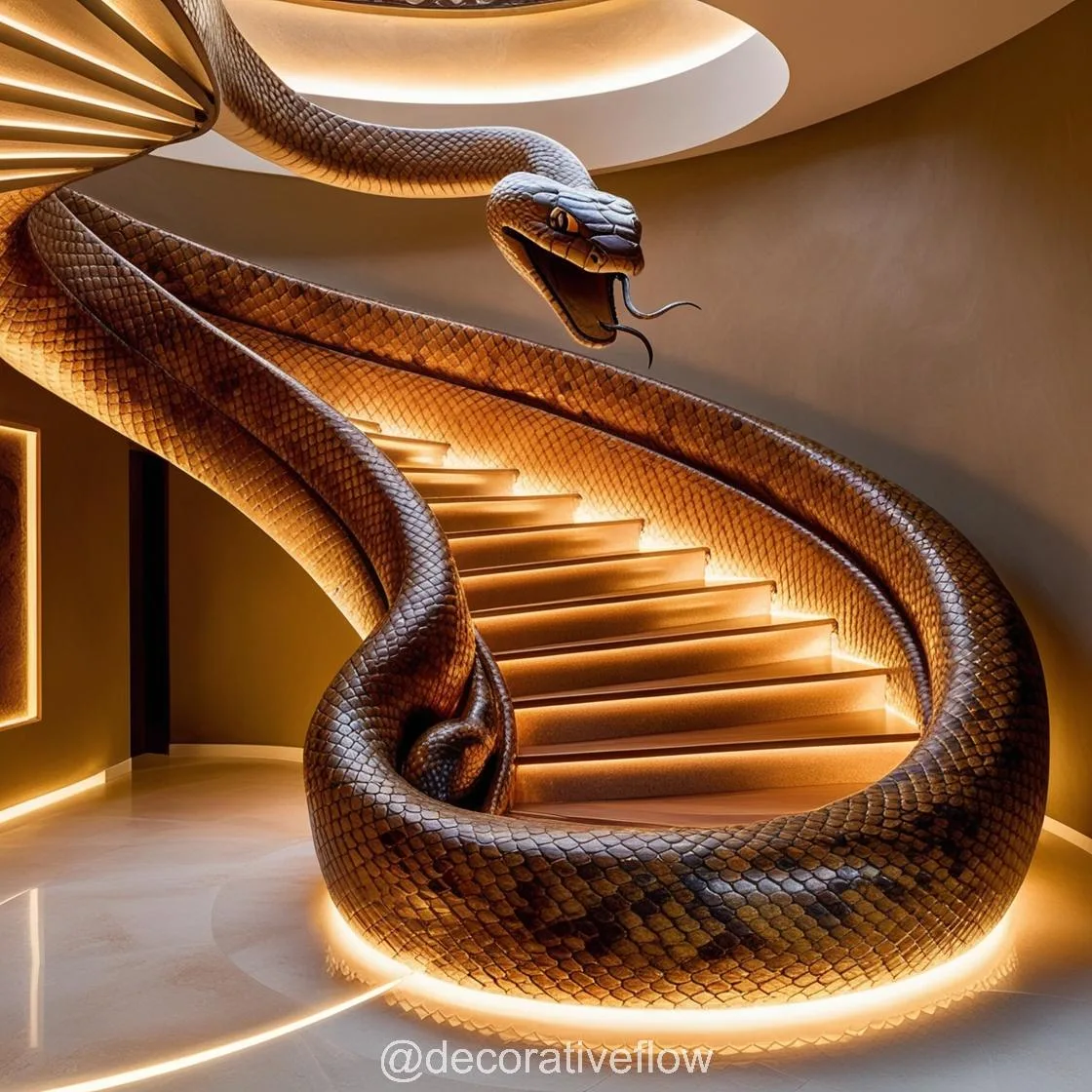
4. Blending Form and Function
A snake shaped staircase is not just a visual marvel; it also serves as a functional element that enhances spatial dynamics. The design allows for:
- Efficient space utilization: Curvilinear forms often adapt better to challenging layouts, maximizing available space.
- Ergonomics: The smooth transitions between steps create a comfortable and natural flow for users.
- Integration with interiors: Whether it’s a dramatic centerpiece or a subtle accent, the staircase complements and elevates surrounding decor.
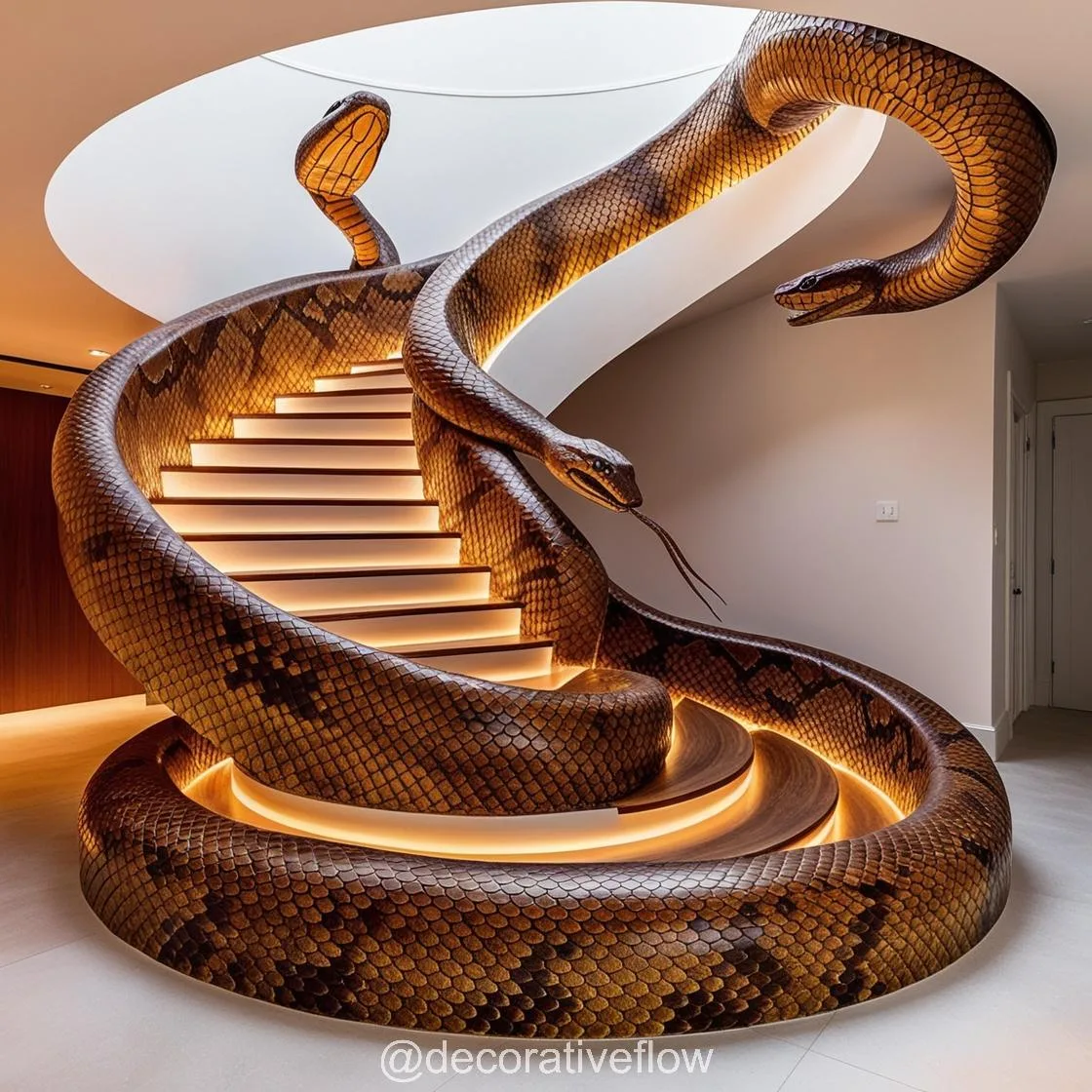
5. Applications: Where Snake Shaped Staircases Shine
These staircases are versatile enough to enhance various settings, including:
Residential Spaces:
- Luxury homes: As a statement piece, the staircase becomes a focal point that embodies opulence.
- Compact interiors: In smaller homes, the design optimizes space while adding elegance.
Commercial Environments:
- Hotels and resorts: The staircase’s artistic form creates a memorable impression on guests.
- Corporate offices: A symbol of innovation, it reflects the forward-thinking ethos of the company.
Public Spaces:
- Museums and galleries: A snake shaped staircase doubles as a work of art within an artistic environment.
- Retail outlets: In flagship stores, it elevates the shopping experience with architectural grandeur.
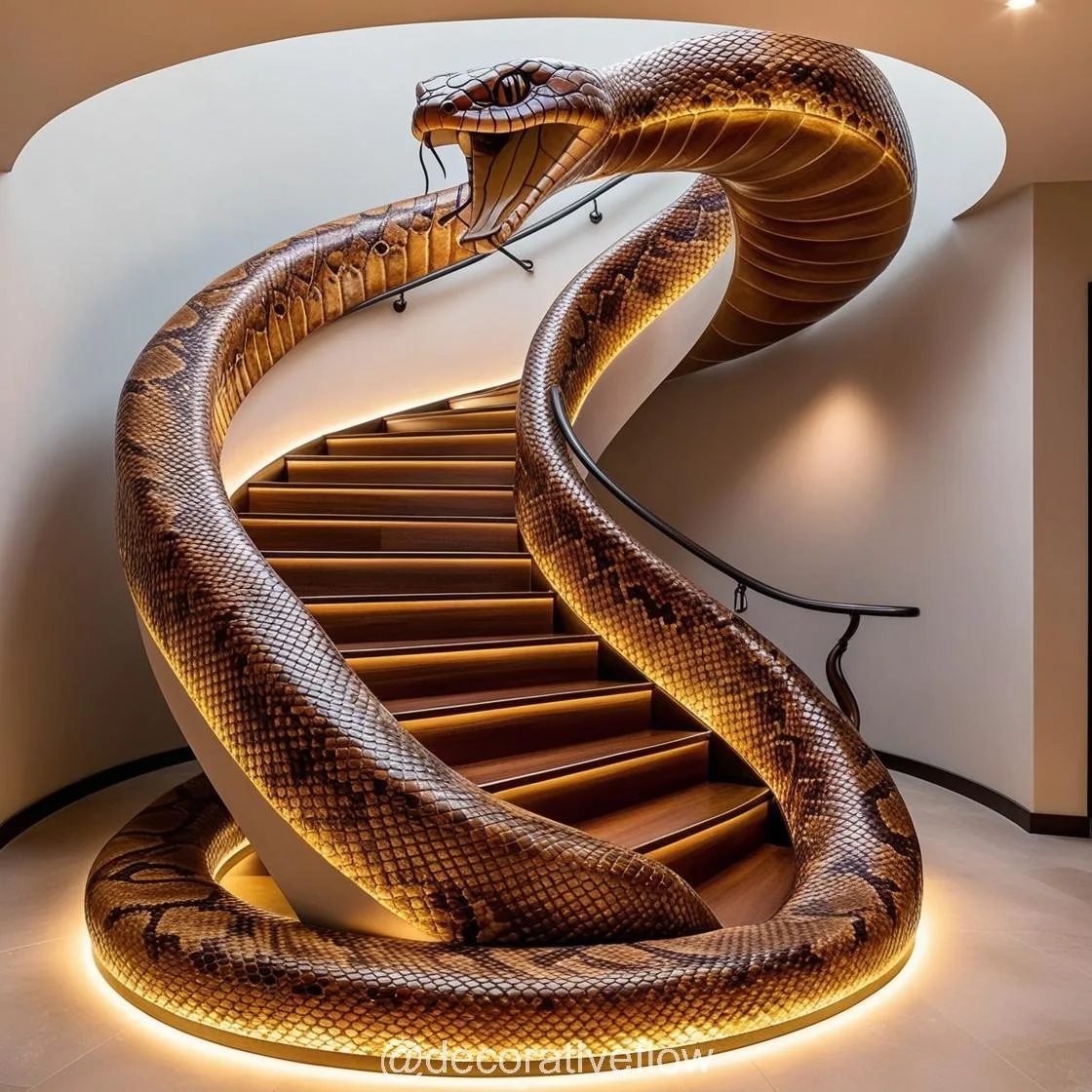
The Timeless Appeal of the Snake Shaped Staircase
The snake shaped staircase is more than a functional structure; it is a celebration of artistry, engineering, and imagination. Its flowing curves invite us to rethink conventional forms and embrace designs inspired by the natural world. From residential interiors to public landmarks, this staircase captivates and inspires, embodying the essence of movement, elegance, and transformation.
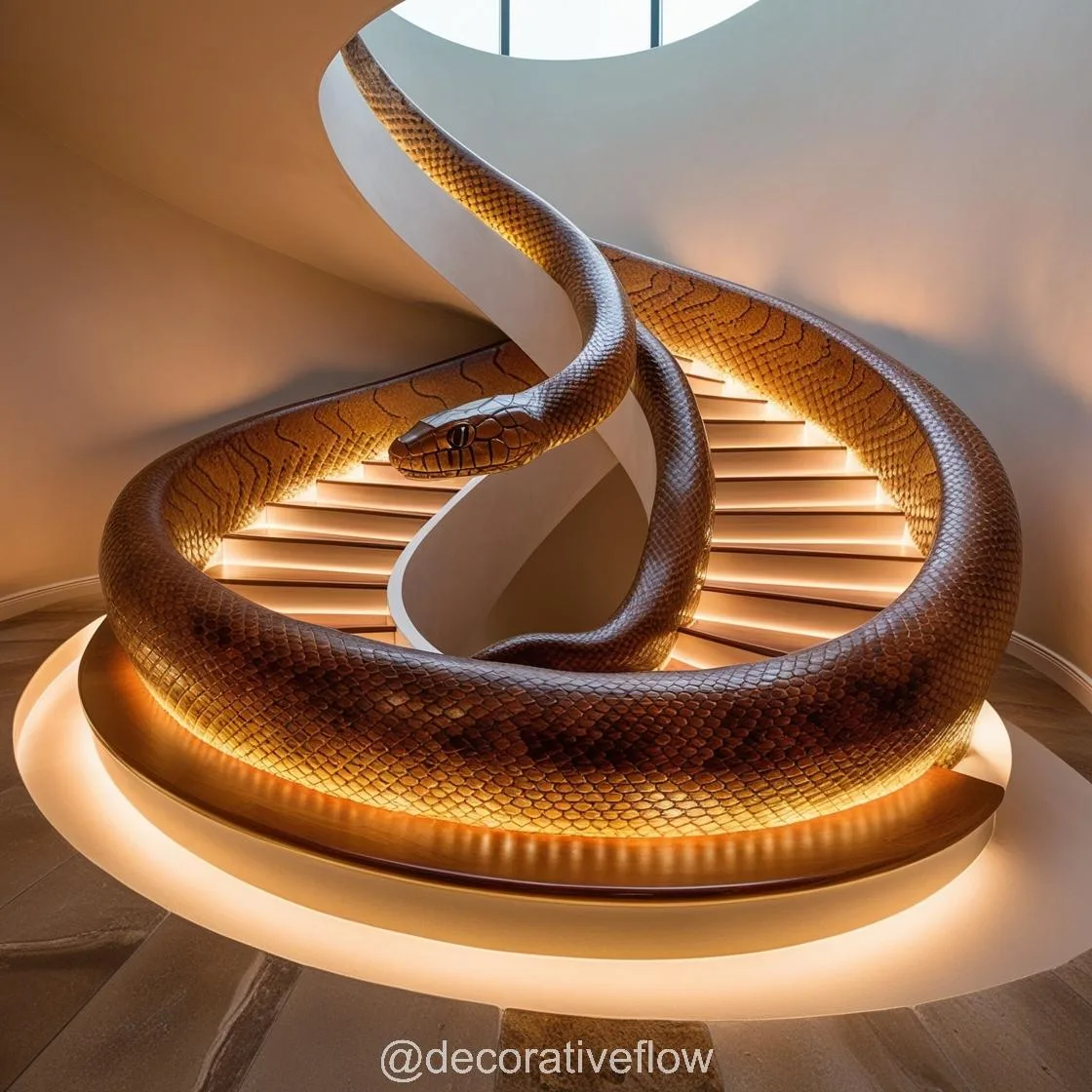
As architects and designers continue to push the boundaries of innovation, the snake shaped staircase stands as a testament to the limitless possibilities of architectural expression. By weaving together form and function, these mesmerizing designs remind us that every step can be a journey through art. Whether you’re building a dream home or designing a cutting-edge commercial space, the snake shaped staircase offers a transformative way to infuse beauty and sophistication into your environment.

